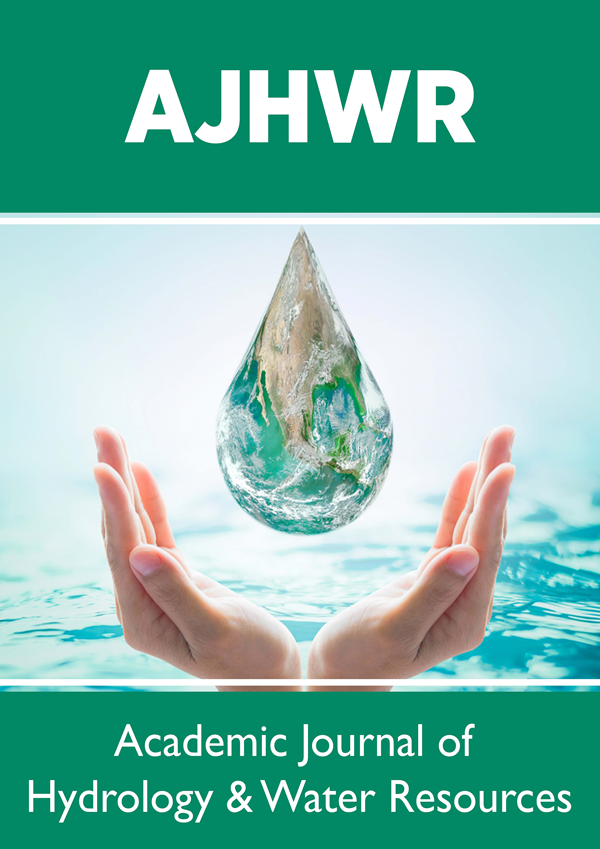Lupine Publishers Group
Lupine Publishers
Menu
Research Article 
Identifying and Dating the White Terraces: New Zealand’s Eighth Wonder of the World and the 1886 Rotomahana Basin Hydrology Volume 1 - Issue 1
A Rex Bunn*
- Independent Researcher, Australia
Received: June 30, 2023 Published: July 10, 2023
Corresponding author: A Rex Bunn, Independent Researcher, Australia
Abstract
Below the equator, the preeminent tourist attraction in the late nineteenth century was the White Terraces of Lake Rotomahana in New Zealand. Tourists sailed past other calcareous terraces in Italy, Turkey and the USA and voyaged down to New Zealand, to view this one superlative, siliceous attraction. In 1886, the tourist boom was terminated when the Tarawera eruption buried the White Terraces. Between 1886-2011 little credence was given to the survival of the Terraces until a joint New Zealand-American project claimed to have found the Terraces on the floor of the crater Lake Rotomahana. This briefly focused researchers on Rotomahana Basin until the claims were refuted. The author maintained his research programme to the present and has reported significant geospatial evidence suggesting the Pink, Black and White Terrace spring sites lie buried outside the crater lake shoreline and may therefore have survived the 1886 eruption. In addition, it is suggested the translated terminology applied to the White Terraces is incorrect. The original Māori name i.e., Te Tarata, long thought to translate as “the tattooed rock” is now considered to more likely represent a botanical name i.e., the Lemonwood tree. This is based on the coincidental botanical names of geothermal features adjacent to Te Tarata i.e., Te Aka Mānuka and Ngāhutu springs. The research also estimated the White Terraces’ age at ~5,000 BCE, making it older than e.g., the Great Pyramid at Giza. In addition, the first hydrological study was made of the surface waters in the Rotomahana Basin before and after the 1886 Tarawera eruption. This assisted in the location of the White Terraces.
Introduction
Below the equator, the preeminent tourist attraction in the late nineteenth century was the White Terraces of Lake Rotomahana in New Zealand. Tourists sailed past other calcareous terraces in Italy, Turkey and the USA and voyaged down to New Zealand, to view this one superlative attraction. In 1886, the tourist boom was terminated when the Tarawera eruption buried the White Terraces. The monstrous landform deformation made by the eruption prevented the European colonists from locating the original site, and they hastily declared them destroyed. The indigenous Māori landowners averred the Terraces survive buried in volcanic ash but were omitted from the official reports given the British settlers’ racial prejudice of the period.
This erroneous history was accepted up to 2016 when Sascha Nolden encountered a notebook in a Basel, Switzerland family archive. It belonged to Ferdinand von Hochstetter (1829-1884), the father of New Zealand geology and dated from his pioneering 1859 terrestrial and geological survey across New Zealand [3]. The notebooks recorded the daily surveying and magnetic bearings to hundreds of landmarks across the North Island. Nolden shared the notebooks with the author who saw the opportunity to reverse engineer the survey data to reveal the lost Hochstetter survey stations at Lake Rotomahana. This could be done by resecting Hochstetter’s reciprocal bearings to find the stations and then re-projecting his 1859 bearings to the Pink and White Terraces. Given the enormity of the landform changes and the eruption mortality among the landowner and their subsequent diaspora from their ruined countryside, Nolden and Bunn undertook six survey iterations over the next five years, until they were finally satisfied all the landmarks and nomenclature were correctly applied [6].
In 2020-2021 the author’s proposed doctoral programme on the survey, the Terraces and the Rotomahana Basin was aborted by the Covid pandemic. Instead, the chapters are published in a series of seven research papers over 2022-2023. This eighth paper concludes the author’s 2014-2023 research at Lake Rotomahana by documenting material unexplored in earlier papers and that will doubtless be of significant interest to future generations of workers at Lake Rotomahana, namely the correct nomenclature of the Māori toponyms handed down and the application of the research to fix the age of the White Terraces.
Methods
The ethnographic research into the Rotomahana Basin nomenclature began with Sascha Nolden’s transcription, translation and interpretation of toponyms recorded by Ferdinand von Hochstetter (1829-1884) in 1859. Relevant placenames were reviewed with Rangitihi Pene, Chairman Hinemihi Marae over 2016-2023. The research establishing the age of Te Tarata spring drew on the seminal research of Ian Nairn and an attempt by Ron Keam (1932-2019) to apply this and estimate the Tarata age [10]. As reported herein, Keam’s method was adapted for a more accurate date for the hydrothermal eruption which launched the White Terraces [4].
White Terrace nomenclature
The White Terraces (in the twentieth century termed in the singular), or Te Tarata has long been translated from the Māori as having a primary meaning of The Tattooed Rock. Hochstetter commented: Te Tarata is said to signify “the tattooed rock;” it therefore seems to have its name from the peculiar forms and figures formed by the siliceous deposits of the terraces. But Tarata is also the name of a tree, Pittosporum crassifolium [8]. Hochstetter would have received this place name and interpretation from his Tūhourangi guide Akutina Rangiheuea (?-1886). However, there are few examples of tattooed rocks in the New Zealand literature. There are reportedly ~750 rock art sites in New Zealand versus ~100,000 in Australia. In Australia these comprise Petroglyphs (rock engravings) and pictographs (drawings). In New Zealand, pictographs comprise nearly all the rock art. What few petroglyphs are reported may or may not be of Māori origin. The author knows of no petroglyphs at Lake Rotomahana.
The Tarata name may instead be as Hochstetter also suggested, a botanical term derived from the undulate leaves of the Lemonwood tree (Pittosporum eugenioides) or of the Karo tree (Pittosporum crassifolium), [5]. The latter is associated with the coast while the former is more associated with inland forests and is a larger tree. Also, the Lemonwood was valued by the early Māori as its sap and leaves were made into a skin lotion with a delightful lemon fragrance. P. eugenioides contains octyl acetate giving its “fruity, Jasmine, herbaceous aroma” and terpinene-4-ol adding “somewhere between peppermint and pine” [11]. The tall, graceful Lemonwood tree with its crinkled, mottled, yellow-green leaves may well have inspired the White Terraces toponym. I had several in my New Zealand Garden and can attest to its perfume. In 2022, in researching the geothermal features adjacent to Te Tarata I discovered coincidental evidence supporting the botanical meaning of Te Tarata. Adjacent to Te Tarata is a series of five boiling springs ignored in the literature. The Māori name of the largest boiling spring in the series abutting Te Tarata is Te Aka Mānuka-The Mānuka Vine (personal communication: Rangitihi Pene, Chairman Hinemihi Marae, 24 September 2022).
Mānuka is a flowering shrub of the Myrtle family. The New Zealand species Leptospermum scoparium is valued for the honey collected by bees from its flower nectar. The dark honey has reported antibacterial and antiseptic properties and edible grades sell for $A200/kg, with skincare grades costing more. The adjacent Tarata and Mānuka geysers were probably named at the same time in the 13th century [5].
The coincidence of adjacent botanical names for geothermal features is suggestive. In 2023, this coincidence became even more significant. On the south side of Tarata is another major geothermal spring Ngāhutu, also lost from the historical record. This year I sought advice on the name Ngāhutu: In terms of Ngāhutu, I can only speculate that it may be - Nothofagus fusca and N. truncata, large toothed-leaf species = hutu, hututawai (pers. comm. Rangitihi Pene 20 April 2023). Nothofagus is a genus of southern beech trees native to the Southern Hemisphere. The species Nothofagus fusca is commonly known as the Red Beech in New Zealand. The author had a fine four-trunked example in his garden. When the new foliage was floodlit, it appeared like a golden veil. Nothofagus truncata, or the Hard Beech tree is endemic to New Zealand and interestingly has a high silica content, though this would not have been known to those Māori naming the feature.
These three adjacent features i.e., Aka Mānuka, Tarata and Ngāhutu increasingly appear to share botanical nomenclature ([5] pers. comm. Rangitihi Pene 20 April 2023). It is perhaps relevant that in the thirteenth century the latest wave of Polynesian immigrants who became the Māori, while embarking from volcanic islands in the Pacific e.g., the Marquesas, may not have encountered such geothermal springs and geysers until reaching the Rotorua region. Thus, their stock of toponyms may not have contained adequate terminology for these features. Instead, the tall, graceful geysers and steaming-fog clouds may have attracted botanical names describing the new forms of features these first immigrants encountered. These trees did not grow on the Marquesas.
The age of the white terraces
The first formal attempt to place an age on the White Terraces came in 1859:
For the formation of the Terraces, such as we see them today, doubtless thousands of years were required…. calculations might be made also be made also with regards to the Tetarata fountain, by examining the thickness of the encrustations [8]. The 1886 eruption precluded such measurement, at least until today. More recently, the age of the White Terraces was estimated by geophysicist Ron Keam (1932-2019) [10]. He based his methodology on the pioneering work of Hodgson and Nairn in gauging fluctuations in the levels of Lake Tarawera over millennia [9].
Hodgson and Nairn found no intermediately dateable lake-level marker events between the end of the Whakatane eruption when Lake Tarawera stood at >330 m, and the onset of the Kaharoa eruption, when it stood at approximately 315 m, so they assumed a linear fall in level with time between these endpoints. Given their accepted (approximate) dates, the average rate of fall was therefore just over 3 mm per year. … Land at the levels of the Pink Terrace and White Terrace basin surfaces would therefore have become exposed about 1000 years and about 2300 years, respectively, before the Kaharoa eruption [10]. Keam’s calculations were biased by his incorrectly assumed altimetry of Lake Rotomahana. For unstated reasons, he discarded the previous altimetry of geologist James Healy MBE (1910-1994) et al and assumed it was 291-292 m a.s.l. When the first evidence-based altimetry for the old lake was published in 2022, and the lake was seen to be 11-12 m higher than he allowed, it became clear that Tarata surfaced much earlier than Keam estimated, in fact, some 4,000 years beforehand.
Taking Nairn’s average fall in lake level of 3 mm pa, Keam estimated that the White Terrace spring was exposed ~ 2,300 years before the 1315 Kaharoa eruption. However, this depended on the altitude of the Tarata spring basin. Keam’s faulty altimetry suggested this layer at 322 m a.s.l. Given the actual platform elevation was at 333 m a.s.l and a linear fall in lake level of 3 mm pa, instead of Tarata spring surfacing at ~ 2,300 years before the Kaharoa eruption i.e., 1315 minus 2,300 years = ~985 years, the platform surfaced ~ 4,000 years before Keam’s date i.e., at ~ 7,000 BP. This correction provides a White Terrace date of ∼5,000 BCE, making the White Terraces older than the Great Pyramid [10].
Rotomahana crater hydrology
This subject was largely ignored by generations of geoscience researchers operating at the Rotomahana Basin over 1887-2023. The author began investigating in 2022 as part of a topographical study [5]. Table 1 provides the first quantitative account of the surface waters in the Rotomahana Basin up to 1886. In Table 1, the total surface water in the Rotomahana Basin was less than geologists guessed. The basin contained ≤6,000 million liters (0.006 km3) of impounded water. This contradicts the recent geological estimate by Andrews:
The volume of the environmental pre-eruptive total water volume is approximately 0.1 km3 (100,000 ML), with the assumption that the entire volume was catastrophically removed or converted to steam during the eruption… (Andrews, [1]). The Andrews estimate is 17 times the basin volume. His 0.1 km3 figure is probably a ratio including surface and groundwater; hence groundwater does not explain the variance [7]. In Table 2, is the estimated crater water volume collecting in the weeks after the 1886 eruption.
The 1886 government survey teams noted water in the crater but made no quantitative estimates of volume or the source flows by percolation. In Table 2, the author estimates the post-eruption crater water, from Smith’s and Harding’s mapping at ~ 1,367 million liters i.e., a quarter of the pre-eruption Rotomahana Basin water volume collected in the crater, in the weeks following the eruption. This is consistent with the author’s 2014 catchment inflow to Lake Rotomahana of 62.2 million liters per diem [2]. These water inflows percolating into the new crater should have enabled the nineteenth century investigators to better locate the crater topography, but this did not occur [6].
Conclusion
This paper reports three inter alia findings from the author’s 2014-2023 programme in the Rotomahana Basin. The toponymic findings indicate that Te Tarata, the White Terraces was originally a botanical name [5]. The publication of the first evidence-based altimetry enables a more accurate date for the hydrothermal eruption which created Te Tarata ~7,000 years ago. The first hydrology studies of the Rotomahana Basin before and after the 1886 eruption, support the revised topography of the basin.
References
- Andrews RG (2014) Approaches in Experimental Volcanology: Bench-Scale, Field-Scale and Mathematical Modelling of Maar-Diatreme Systems. University of Otago, Thesis, USA.
- Bunn AR (2014) Raising the Tattooed Rock-A Tourism Proposal of National Significance. Conference, Rotorua.
- Bunn AR, Nolden S (2018) Forensic cartography with Hochstetter’s 1859 Pink and White Terraces survey: Te Otukapuarangi and Te Tarata. Journal of the Royal Society of New Zealand 48: 39-56.
- Bunn AR (2022) The first evidence-based altimetry for locating the lost Eighth Wonder of the World: the Pink, Black and White Terraces.
- Bunn AR (2023) Resolving the 1886 White Terraces riddle in the Taupō Volcanic Zone. Front Earth Sci Volcanology 11: 1-22.
- Bunn AR, Nolden S (2023) Ferdinand von Hochstetter’s November 1860 Folio of New Zealand survey data and the location of the Pink and White Terraces. Earth Ar Xiv pg: 1-37.
- Cole JW (1970) Structure and eruptive history of the Tarawera Volcanic Complex. New Zealand Journal of Geology and Geophysics, 13(4): 879-902.
- Hochstetter F (1867) New Zealand: its physical geography, geology, and natural history with special reference to the results of Government expeditions in the Provinces of Auckland and Nelson.
- Hodgson KA, Nairn IA (2005) The c. AD 1315 syn‐eruption and AD 1904 post‐eruption breakout floods from Lake Tarawera, Haroharo caldera, North Island, New Zealand. New Zealand Journal of Geology and Geophysics 48(3): 491-506.
- Keam RF (2015) The Tarawera eruption, Lake Rotomahana, and the origin of the Pink and White Terraces. Journal of Volcanology and Geothermal Research 314: 10-38.
- Weston RJ (2004) Composition of Essential Oils from the Leaves of Seven New Zealand Species of Pittosporum (Pittosporaceae). Journal of Essential Oil Research 16(5): 453-458.

Top Editors
-

Mark E Smith
Bio chemistry
University of Texas Medical Branch, USA -

Lawrence A Presley
Department of Criminal Justice
Liberty University, USA -

Thomas W Miller
Department of Psychiatry
University of Kentucky, USA -

Gjumrakch Aliev
Department of Medicine
Gally International Biomedical Research & Consulting LLC, USA -

Christopher Bryant
Department of Urbanisation and Agricultural
Montreal university, USA -

Robert William Frare
Oral & Maxillofacial Pathology
New York University, USA -

Rudolph Modesto Navari
Gastroenterology and Hepatology
University of Alabama, UK -

Andrew Hague
Department of Medicine
Universities of Bradford, UK -

George Gregory Buttigieg
Maltese College of Obstetrics and Gynaecology, Europe -

Chen-Hsiung Yeh
Oncology
Circulogene Theranostics, England -
.png)
Emilio Bucio-Carrillo
Radiation Chemistry
National University of Mexico, USA -
.jpg)
Casey J Grenier
Analytical Chemistry
Wentworth Institute of Technology, USA -
Hany Atalah
Minimally Invasive Surgery
Mercer University school of Medicine, USA -

Abu-Hussein Muhamad
Pediatric Dentistry
University of Athens , Greece

The annual scholar awards from Lupine Publishers honor a selected number Read More...




